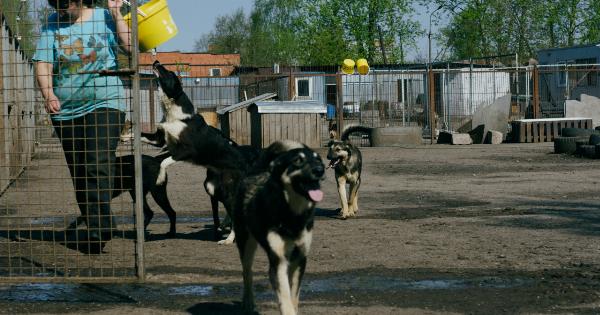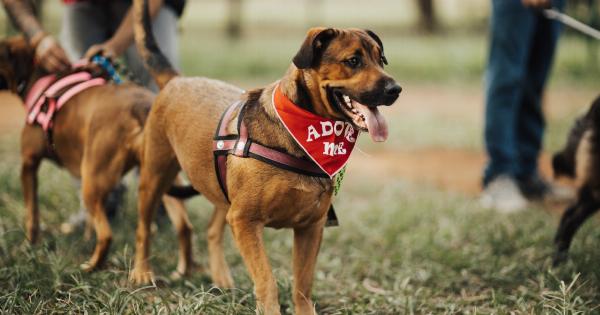Living with a furry friend can bring immense joy and companionship, but it is not without its challenges. One of the most common problems faced by dog owners is dealing with excessive barking and the struggle to create a peaceful and quiet environment.
This article will explore the various reasons behind excessive barking and provide tips and tricks to help dog owners find some much-needed tranquility.
The Root of the Problem
Before delving into the solutions, it’s crucial to understand why dogs bark excessively. Dogs communicate through barking, and it is entirely normal for them to vocalize now and then.
However, when barking becomes incessant and prolonged, it can indicate an underlying issue that needs to be addressed.
A primary reason behind excessive barking is the lack of proper training. Dogs often bark because they have not been taught alternative ways to communicate their needs and wants. Without the necessary guidance, they rely on barking to express themselves.
Another common cause is boredom. Dogs are intelligent animals that require mental stimulation and physical exercise to thrive.
When their needs aren’t adequately met, they may resort to excessive barking as a means of seeking attention or entertainment.
Anxiety and fear can also trigger excessive barking in dogs. Just like humans, dogs can experience anxiety and phobias, which they may express through barking.
It’s crucial for owners to identify the triggers and help their furry friends manage their fears in a healthy way.
Implementing a Training Routine
Training is key to curbing excessive barking. It not only helps in addressing the barking problem but also strengthens the bond between the dog and its owner. Here are some essential training techniques to consider:.
1. Teach the “Quiet” Command
Teaching your dog the “quiet” command can help them understand when it’s appropriate to stop barking. Start by holding a treat in front of your dog’s nose and then say “quiet” in a calm but firm voice.
As soon as your dog stops barking to sniff the treat, reward them and praise their good behavior.
2. Use Positive Reinforcement
Positive reinforcement is a powerful tool when it comes to training dogs. Whenever your furry friend stops barking on command or remains silent in a situation that would typically trigger barking, reward them with treats, praise, or extra playtime.
This positive association will encourage them to continue the desired behavior.
3. Provide Mental and Physical Stimulation
Boredom is often a major contributor to excessive barking. To combat this, ensure your dog receives enough mental and physical exercise. Engage them in interactive games, puzzle toys, and regular walks to keep their minds and bodies active.
A tired dog is less likely to bark excessively.
4. Seek Professional Help if Needed
If the barking issue persists despite your best efforts, consider seeking assistance from a professional dog trainer or behaviorist. They can assess your dog’s specific needs and offer additional training techniques tailored to your pooch.
Coping with Anxiety and Fear
Anxiety and fear-induced barking require special attention. Here are some strategies to help your pooch deal with these emotions:.
1. Create a Safe Haven
Designate a specific area in your home where your dog feels safe and secure. Fill this area with their favorite toys, blankets, and bedding to provide a comforting environment.
This safe haven will give them a retreat during stressful situations, reducing their anxiety and potential barking.
2. Counterconditioning
Counterconditioning involves changing your dog’s emotional response to a specific trigger. If your dog barks excessively due to fear or anxiety in certain situations, gradually expose them to those triggers in a controlled and positive manner.
Reward them for calm behavior, allowing them to associate the trigger with positivity instead of fear.
3. Consider Anti-Anxiety Products
In severe cases, your veterinarian may recommend anti-anxiety products like calming supplements, pheromone diffusers, or anxiety wraps. These products can help alleviate your pooch’s anxiety and reduce excessive barking.
However, it’s important to consult with a professional before using any such products.
Tackling Environmental Triggers
Barking at external stimuli such as strangers, other dogs, or loud noises can be challenging to manage. Here are a few tips to address these environmental triggers:.
1. Desensitization
Desensitization involves gradually exposing your dog to the trigger in a controlled manner, starting with a minimal intensity level. For example, if your dog barks at passing cars, start by exposing them to recorded car sounds at a low volume.
Gradually increase the volume over time while rewarding them for calm behavior. This technique helps reduce the intensity of their response to the trigger.
2. Use Distraction Techniques
When your dog encounters a trigger that typically results in excessive barking, redirect their attention to a more positive activity.
Offer them interactive toys, engage them in a training session, or initiate playtime to divert their focus and prevent the barking behavior.
3. Soundproofing and Visual Barriers
If your dog is easily agitated by outdoor noises or visuals, consider soundproofing your home or creating visual barriers.
Thick curtains, white noise machines, or even strategically placed furniture can help reduce external stimuli that trigger barking.
Conclusion
Excessive barking can test the patience of even the most devoted dog owners. However, understanding the root causes and implementing effective training techniques can help address and mitigate this issue.
Remember, consistency, positive reinforcement, and a deep understanding of your furry friend’s needs are key to creating a peaceful and quiet environment for both you and your beloved pooch.


























